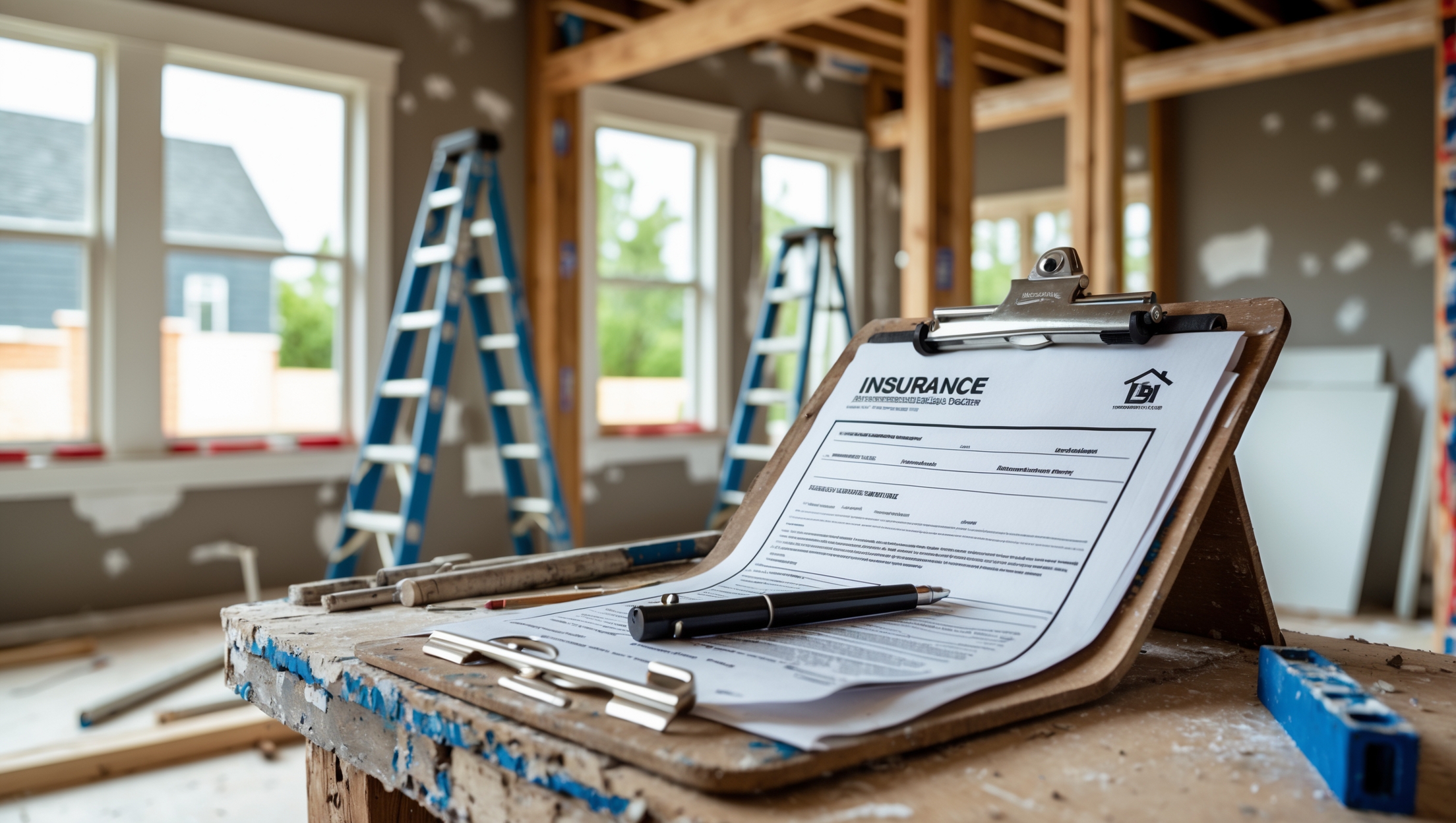Introduction
Home improvement projects are often exciting ventures, promising a fresh look or enhanced functionality for your living space. However, behind the thrill of picking paint colors or choosing fixtures lies a critical, sometimes overlooked aspect: insurance. Every year, countless homeowners embark on renovations without fully understanding the insurance implications of hiring contractors. The result? Costly disputes, denied claims, and financial setbacks that could have been avoided with informed preparation. Navigating the complexities of contractor insurance is not merely a bureaucratic hurdle—it’s essential protection for your investment and peace of mind. In this guide, we’ll dive deep into the most common insurance pitfalls homeowners encounter when hiring home improvement contractors, and provide actionable strategies to ensure your project is covered from start to finish. Whether you’re planning a kitchen remodel, a new deck, or a whole-home makeover, understanding these insurance essentials could save you from headaches and unexpected expenses down the road.
Why Insurance Matters in Home Improvements
The High Stakes of Renovation Risk
Even minor renovations involve inherent risks: accidents, property damage, or injuries to workers. Without adequate insurance, these risks can become the homeowner’s direct responsibility. Many believe that hiring a “licensed and insured” contractor is enough, but the reality is more nuanced. The type, limits, and validity of insurance policies all play a role in who is liable if something goes wrong.
Protecting Your Property and Finances
Insurance acts as a financial safety net. It covers repair costs for accidental damage, medical expenses for injuries, and legal fees if disputes arise. Without the right coverage, homeowners may face lawsuits, out-of-pocket repairs, or even insurance policy cancellations. Understanding the insurance landscape ensures that your renovation doesn’t turn into a financial nightmare.
Common Insurance Pitfalls When Hiring Contractors
1. Failing to Verify Contractor Insurance
One of the most frequent and damaging mistakes is taking a contractor’s word for it regarding insurance. Some homeowners accept a verbal assurance or an outdated certificate, assuming they’re protected. This can leave you exposed if the policy has lapsed or offers inadequate coverage.
- Request Documentation: Always ask for a current Certificate of Insurance (COI) directly from the contractor’s insurance provider.
- Check Expiry Dates: Policies can be canceled mid-project, so verify that coverage extends through the duration of your renovation.
2. Overlooking the Types of Insurance Required
Not all insurance is created equal. A contractor may carry general liability but lack workers’ compensation or adequate coverage limits. You need to ensure your contractor holds the following:
- General Liability Insurance: Covers third-party property damage and bodily injury.
- Workers’ Compensation: Protects you from liability if a worker is injured on your property.
- Commercial Auto (if vehicles are used): Covers damages or injuries caused by the contractor’s vehicles.
- Specialty Insurance: For high-risk work like roofing or structural changes, additional endorsements may be necessary.
3. Ignoring Subcontractor Coverage
Many general contractors hire subcontractors for electrical, plumbing, or specialty work. If these subs are not insured, the liability can fall back on you—the homeowner. Don’t assume coverage extends automatically.
- Request Proof from All Parties: Require insurance certificates from all subcontractors.
- Ask for Additional Insured Status: This gives you direct protection on their policies.
4. Not Notifying Your Homeowners Insurance Provider
Homeowners often skip the step of informing their own insurer about upcoming renovations. Significant home improvements can alter the value and risk profile of your property, potentially voiding your coverage if not reported.
- Contact Your Insurer: Notify them before work begins to ensure continued protection and discuss any changes in coverage needs.
- Update Policy Limits: Large upgrades may require increasing your dwelling or liability limits.
5. Failing to Get Named as Additional Insured
Being an “additional insured” on the contractor’s policy means you’re covered directly for certain claims. Many homeowners neglect this step, missing out on critical protection if something goes wrong.
- Request It in Writing: Insist on being added as an additional insured before any work starts.
- Review Policy Language: Ensure the additional insured endorsement is attached to the certificate.
6. Accepting Low Coverage Limits
Some contractors carry only the minimum required by law, which may not be enough for larger projects. If a major accident occurs, the contractor’s policy could be exhausted, leaving you responsible for the balance.
- Understand Project Scope: Larger or riskier projects require higher coverage limits—aim for at least $1 million in liability for substantial renovations.
- Compare Quotes: Don’t hesitate to ask contractors for details and compare their policy limits.
7. Relying on Handshakes or Informal Agreements
Home renovations often start with trust and good intentions, but informal agreements leave gaps in legal and insurance protection. Always formalize arrangements with a detailed contract outlining insurance requirements.
- Include Insurance Clauses: Spell out the types of coverage, limits, and documentation required.
- Specify Consequences: State what will happen if insurance lapses during the project.
8. Not Checking for License and Bond Status
Licensing and bonding are separate from insurance but crucial for recourse if something goes awry. Unlicensed or unbonded contractors are often uninsured or underinsured as well.
- Verify Credentials: Use your state’s online contractor licensing portal.
- Ask for Bond Proof: Bonds provide financial recourse if the contractor fails to complete the job or pay suppliers.
How to Vet Contractor Insurance Like a Pro
Step 1: Get Documentation Directly from the Source
Request insurance certificates straight from the insurance company or agent, not the contractor. This prevents tampering or outdated documents.
Step 2: Check Policy Details Carefully
- Policy Number and Dates: Ensure the policy is active for the entire project timeline.
- Coverage Limits: Confirm they meet or exceed your requirements.
- Named Insured: The contractor’s business name should match all documentation.
- Coverage Types: Make sure both liability and workers’ compensation are present.
Step 3: Confirm Additional Insured Status
Ask for a copy of the endorsement page naming you as an additional insured. This provides direct recourse if a claim arises.
Step 4: Repeat for Subcontractors
Don’t assume umbrella coverage. Request separate certificates for every subcontractor involved.
Step 5: Keep Records Organized
Store all insurance certificates, endorsements, and correspondence in a dedicated folder. If a dispute or claim occurs, having clear documentation expedites the process.
What to Do If a Contractor Refuses or Hesitates
Red Flags to Watch For
- Delays or Excuses: Contractors who stall on providing insurance documents may not be properly covered.
- Unusually Low Bids: Low prices often correlate with skimping on insurance or working unlicensed.
- Policy Lapses: Gaps in coverage or recently reinstated policies can indicate financial instability.
How to Address Issues
Be firm and professional. Explain that insurance requirements protect both parties. If a contractor refuses to provide documentation or balks at adding you as additional insured, consider it a deal breaker. There are plenty of reputable, properly insured professionals eager for your business.
Homeowner’s Insurance: Gaps and Coordination
Understand Exclusions
Most standard homeowners insurance policies exclude damage resulting from major renovations, or have strict reporting requirements for construction activity. Policy exclusions may leave you unprotected if you don’t coordinate with your insurer.
When to Update Your Policy
- Major Value Increases: Projects like additions or kitchen remodels that raise your home’s value should be reported to your insurer.
- Vacancy or Relocation: If you vacate your home during a renovation, your policy may require special endorsements.
Consider Builder’s Risk Insurance
For large-scale renovations or custom builds, builder’s risk insurance offers broader protection for materials, equipment, and completed work. Discuss options with your insurer if your project is substantial.
Special Considerations for DIY Projects
Some homeowners take on portions of renovations themselves. While this may save money, it can complicate insurance. Most contractors’ policies exclude homeowner labor, and your own insurance may not cover injuries or damages caused by DIY work.
- Check Your Policy: Clarify with your insurer what’s covered if you pitch in on the project.
- Hire Pros for High-Risk Tasks: Electrical, plumbing, and structural work should be handled by licensed, insured professionals.
Real-World Examples: Insurance Pitfalls in Action
Case Study 1: The Uninsured Subcontractor
A homeowner hired a general contractor for a bathroom remodel, who in turn brought in an uninsured electrician. When the electrician suffered a serious injury, the homeowner was sued for medical costs—not the contractor. This could have been prevented by demanding insurance certificates from all parties.
Case Study 2: Outdated Policy Leads to Denied Claim
During a kitchen renovation, a water leak damaged custom cabinetry. The contractor’s insurance policy had lapsed mid-project. The homeowner’s claim was denied, resulting in thousands in out-of-pocket repairs. Regularly verifying policy status would have flagged the issue before disaster struck.
Case Study 3: Home Value Rises, Coverage Doesn’t
Following a major addition, a homeowner failed to update their own insurance policy. When a storm damaged the new wing, the insurer only covered the old square footage, leaving the addition uninsured. Reporting improvements promptly can prevent such gaps.
Best Practices for a Protected Project
- Vet Every Contractor: Insurance, licensing, and bonding are non-negotiable. Don’t cut corners, even for small jobs.
- Maintain Open Communication: Keep your insurer informed before, during, and after renovations.
- Document Everything: Save all contracts, insurance certificates, and communication.
- Don’t Be Afraid to Walk Away: If a contractor can’t provide proper insurance, find one who can.
Conclusion
Home improvement projects should enhance your home and quality of life—not put your financial security at risk. While it’s easy to get swept up in design inspiration and project timelines, ignoring insurance details can have dire consequences. From verifying contractor policies to coordinating with your own insurer, every step you take to ensure proper coverage is an investment in peace of mind. Remember, reputable contractors understand the importance of insurance and are happy to provide documentation. Don’t hesitate to insist on seeing proof, asking questions, or walking away from those who can’t deliver. By staying proactive and detail-oriented, you protect your home, your finances, and your future enjoyment of your renovated space. Before your next project, use this guide as a checklist—avoid the common pitfalls, implement best practices, and turn your renovation into a success story for all the right reasons. Insist on transparency, prioritize protection, and you’ll enjoy your improved home with confidence and security for years to come.




